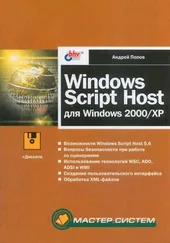Chris Cant - Writing Windows WDM Device Drivers
Здесь есть возможность читать онлайн «Chris Cant - Writing Windows WDM Device Drivers» весь текст электронной книги совершенно бесплатно (целиком полную версию без сокращений). В некоторых случаях можно слушать аудио, скачать через торрент в формате fb2 и присутствует краткое содержание. Город: Lawrence, Kansas 66046, ISBN: , Издательство: R & D Books, Жанр: Программирование, на английском языке. Описание произведения, (предисловие) а так же отзывы посетителей доступны на портале библиотеки ЛибКат.
- Название:Writing Windows WDM Device Drivers
- Автор:
- Издательство:R & D Books
- Жанр:
- Год:неизвестен
- Город:Lawrence, Kansas 66046
- ISBN:0-87930-565-7
- Рейтинг книги:5 / 5. Голосов: 1
-
Избранное:Добавить в избранное
- Отзывы:
-
Ваша оценка:
- 100
- 1
- 2
- 3
- 4
- 5
Writing Windows WDM Device Drivers: краткое содержание, описание и аннотация
Предлагаем к чтению аннотацию, описание, краткое содержание или предисловие (зависит от того, что написал сам автор книги «Writing Windows WDM Device Drivers»). Если вы не нашли необходимую информацию о книге — напишите в комментариях, мы постараемся отыскать её.
Writing Windows WDM Device Drivers — читать онлайн бесплатно полную книгу (весь текст) целиком
Ниже представлен текст книги, разбитый по страницам. Система сохранения места последней прочитанной страницы, позволяет с удобством читать онлайн бесплатно книгу «Writing Windows WDM Device Drivers», без необходимости каждый раз заново искать на чём Вы остановились. Поставьте закладку, и сможете в любой момент перейти на страницу, на которой закончили чтение.
Интервал:
Закладка:
Make sure that you do not accidentally power down a device during a lengthy I/O operation.
Handling Set Power IRPs
The parameters on the stack of a Set Power IRP indicate which system or device power state is being set.
If Parameters.Power.Type is SystemPowerState, Parameters.Power.State.SystemState is the desired system state. If Parameters.Power.Type is DevicePowerState, Parameters.Power.State.DeviceState is the desired device state. The Parameters.Power.ShutdownType field gives more information about system Shutdown messages. A final parameter, Parameters.Power.SystemContext, is not currently used.
Listing 10.2 shows the main Wdm2 handler for all Power IRPs, Wdm2Power. If this is a Set Power IRP, PowerSetPower is called. Other Power IRPs are passed to DefaultPowerHandler , which simply hands them down to the lower drivers in the same way as Wdm1. All Power IRPs are completed with an error status if the device is not in the started PnP state.
Listing 10.2 Basic Wdm2 power handling
NTSTATUS Wdm2Power(IN PDEVICE_OBJECT fdo, IN PIRP Irp) {
PWDM2_DEVICE_EXTENSION dx = (PWDM2_DEVICE_EXTENSI0N)fdo->DeviceExtension;
if (dx->IODisabled) return CompleteIrp(Irp, STATUS_DEVICE_NOT_CONNECTED, 0);
if (!LockDevice(dx)) return CompleteIrp(Irp, STATUS_DELETE_PENDING, 0);
NTSTATUS status = STATUS_SUCCESS;
DebugPrint("Power %I",Irp);
PIO_STACK_LOCATION IrpStack = IoGetCurrentIrpStackLocation(Irp);
ULONG MinorFunction = IrpStack->MinorFunction;
if (MinorFunction==IRP_MN_SET_POWER) status = PowerSetPower(dx,Irp);
else status = DefaultPowerHandler(dx,Irp);
UnlockDevice(dx);
return status;
}
NTSTATUS DefaultPowerHandler(IN PWDM2_DEVICE_EXTENSION dx, IN PIRP Irp) {
DebugPrintMsg("DefaultPowerHandler");
// Just pass to lower driver
PoStartNextPowerIrp(Irp);
IoSkipCurrentlrpStackLocation(Irp);
return PoCallDriver(dx->NextStackDevice, Irp);
}
Listing 10.3 shows the PowerSetPower routine. As can be seen, there are two main sections to this code. The first handles setting system power states and the second sets a device power state.
Listing 10.3 PowerSetPower routine
NTSTATUS PowerSetPower(IN PWDM2_DEVICE_EXTENSION dx, IN PIRP Irp) {
NTSTATUS status = STATUS_SUCCESS;
PIO_STACK_IOCATION IrpStack = IoGetCurrentIrpStackLocation(Irp);
POWER_STATE_TYPE PowerType = IrpStack->Parameters.Power.Type;
POWER_STATE PowerState = IrpStack->Parameters.Power.State;
////////////////////////////////////////////////////////////////////
// Set System Power
if (PowerType==SystemPowerState) {
DEVICE_POWER_STATE DesiredDevicePowerState = (PowerState.SystemState<=PowerSystemWorking ? PowerDeviceD0 : PowerDeviceD3);
if (DesiredDevicePowerStatePowerState) {
// This system state means we have to increase device power
DebugPrint("System state %d. Increase device power to %d", PowerState.SystemState, DesiredDevicePowerState);
// Process on way up stack…
PoStartNextPowerIrp(Irp);
IoCopyCurrentIrpStackLocationToNext(Irp);
IoSetCompletionRoutine(Irp, OnCompleteIncreaseSystemPower, NULL, TRUE, TRUE, TRUE);
return PoCallDriver(dx->NextStackDevice, Irp);
} else if(DesiredDevicePowerState>dx->PowerState) {
// This system state means we have to decrease device power
DebugPrint("System state %d. Decrease device power to %d",
PowerState.SystemState, DesiredDevicePowerState);
// Send power down request to device
status = SendDeviceSetPower(dx, DesiredDevicePowerState);
if (!NT_SUCCESS(status)) {
PoStartNextPowerIrp(Irp);
return CompleteIrp(Irp, status, 0);
}
}
}
////////////////////////////////////////////////////////////////////
// Set Device Power
else if (PowerType==DevicePowerState) {
DEVICE_POWER_STATE DesiredDevicePowerState = PowerState.DeviceState;
if (DesiredDevicePowerStatePowerState) {
// Increase device power state
DebugPrint("Increase device power to %d", DesiredDevicePowerState);
// Process on way up stack…
PoStartNextPowerIrp(Irp);
IoCopyCurrentIrpStackLocationToNext(Irp);
IoSetCompletionRoutine(Irp, OnCompleteIncreaseDevicePower, NULL,TRUE, TRUE, TRUE);
return PoCallDriver(dx->NextStackDevice, Irp);
} else if (DesiredDevicePowerState>dx->PowerState) {
// Decrease device power state
DebugPrint("Decrease device power to %d", DesiredDevicePowerState);
// Set power state
SetPowerState(dx,PawerState.DeviceState);
}
}
////////////////////////////////////////////////////////////////////
// Unrecognised Set Power
#if DBG
else DebugPrint("Power: unrecognised power type %d",PowerType);
#endif
// Finally pass to lower drivers return DefaultPowerHandler(dx, Irp);
}
When a new system state is being set, the first task is determining to which device power state this corresponds. As mentioned previously, in Wdm2 the fully on D0 device state is only used for the fully on SO system power state. For all other system power states, the fully off D3 device state is used.
PowerSetPower works out the corresponding device power state. If this matches the current device power state, saved in the device extension, no more need be done, apart from falling through to call DefaultPowerHandler .
If the device needs to be powered up, the situation depicted in Figure 10.3 applies. The Set System Power IRP handler can start the device only after the lower drivers have processed the request. PowerSetPower installs OnCompleteIncreaseSystemPower as the completion routine.
Listing 10.4 shows how OnCompleteIncreaseSystemPower eventually calls SendDeviceSetPower to send a Set Device Power IRP to itself. OnCompleteIncreaseSystemPower works out the desired device power state again. It is possible that a Set Device Power IRP has arrived in the meantime to power up the device.
If the device needs to be powered down, as per Figure 10.2, PowerSetPower calls SendDeviceSetPower to send a Set device Power request first. It can then simply let DefaultPowerHandler pass the IRP down to the lower drivers.
Listing 10.4 OnCompleteIncreaseSystemPower routine
NTSTATUS OnCompleteIncreaseSystemPower(IN PDEVICE_OBJECT fdo, IN PIRP Irp, IN PVOID context) {
PWDM2_DEVICE_EXTENSI0N dx = (PWDM2_DEVICE_EXTENSION)fdo->DeviceExtension;
if (Irp->PendingReturned) IoMarkIrpPending(Irp);
NTSTATUS status = Irp->IoStatus.Status;
Интервал:
Закладка:
Похожие книги на «Writing Windows WDM Device Drivers»
Представляем Вашему вниманию похожие книги на «Writing Windows WDM Device Drivers» списком для выбора. Мы отобрали схожую по названию и смыслу литературу в надежде предоставить читателям больше вариантов отыскать новые, интересные, ещё непрочитанные произведения.
Обсуждение, отзывы о книге «Writing Windows WDM Device Drivers» и просто собственные мнения читателей. Оставьте ваши комментарии, напишите, что Вы думаете о произведении, его смысле или главных героях. Укажите что конкретно понравилось, а что нет, и почему Вы так считаете.






